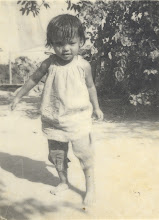

http://www.un.org/apps/news/story.asp?NewsID=33484&Cr=indigenous&Cr1=

Indigenous boomerangs in the forest of Australia
14 January 2010 – The world’s 370 million indigenous peoples suffer from disproportionately, often exponentially, higher rates of poverty, health problems, crime and human rights abuses, the first ever United Nations study on the issue reported today, stressing that self-determination and land rights are vital for their survival.
Startling figures contained in The State of the World’s Indigenous Peoples include:
In the United States, a Native American is 600 times more likely to contract tuberculosis and 62 per cent more likely to commit suicide than the general population. In Australia, an indigenous child can expect to die 20 years earlier than his non-native compatriot. The life expectancy gap is also 20 years in Nepal, while in Guatemala it is 13 years and in New Zealand it is 11. In parts of Ecuador, indigenous people have 30 times greater risk of throat cancer than the national average. Worldwide, more than 50 per cent of indigenous adults suffer from Type 2 diabetes – a number predicted to rise.
“Every day, indigenous communities all over the world face issues of violence and brutality, continuing assimilation policies, dispossession of land, marginalization, forced removal or relocation, denial of land rights, impacts of large-scale development, abuses by military forces and a host of other abuses,” the report’s authors said in a news release.
Although indigenous peoples make up only 5 per cent of the global population, they constitute around one third of the world’s 900 million extremely poor rural people. In both developed and developing countries, poor nutrition, limited access to care, lack of resources crucial to maintaining health and well-being and contamination of natural resources are all contributing factors to the terrible state of indigenous health worldwide.
At the report’s launch at UN Headquarters in New York, UN Permanent Forum on Indigenous Issues Chairperson Vicki Tauli-Corpuz said its value would be far-reaching because it comprises for the first time very clearly aggregated data.
“We believe this is going to be crucial for Governments and for the UN to address more seriously and comprehensively the issues of indigenous people,” she told a news briefing. “It’s very daring and bold in a sense because it does identify countries and the situation of indigenous peoples in various countries both in the developed world as well as in the developing world.”
Indigenous peoples experience disproportionately high levels of maternal and infant mortality, malnutrition, cardiovascular illnesses, HIV/AIDS and other infectious diseases such as malaria and tuberculosis (TB), while suicide rates, particularly among youth, are considerably higher in many countries, for example up to 11 times the national average for the Inuit in Canada. The Inuit TB rate is over 150 times higher.
The study repeatedly identifies displacement from lands, territories and resources as one of the most significant threats for indigenous peoples, citing many examples, including in Malaysia, Indonesia, Thailand, Hawaii, Rwanda, Burundi, Uganda, Democratic Republic of the Congo (DRC) and Colombia.
“When indigenous peoples have reacted and tried to assert their rights, they have suffered physical abuse, imprisonment, torture and even death,” it says, stressing that their rights to their own lands and territories must be respected while they need to develop their own definitions and indicators of poverty and well-being.
“Indigenous peoples suffer from the consequences of historic injustice, including colonization, dispossession of their lands, territories and resources, oppression and discrimination, as well as lack of control over their own ways of life. Their right to development has been largely denied by colonial and modern States in the pursuit of economic growth,” it adds, warning that the importance of land and territories to indigenous cultural identity cannot be stressed enough.
Of the world’s 6,000 to 7,000 languages, a great majority are spoken by indigenous peoples, and many, if not most, are in danger of becoming extinct, with some 90 per cent possibly doomed within the next 100 years. About 97 per cent of the world’s population currently speaks 4 per cent of its languages, while only 3 per cent speaks 96 per cent of them.
Indigenous peoples, who are the stewards of some of the most biologically diverse areas, accumulating an immeasurable amount of traditional knowledge about their ecosystems, also face the dual and somewhat contradictory threats of discrimination and commodification.
They face racism and discrimination that sees them as inferior, yet they are increasingly recognized for their unique relationship with their environment, their traditional knowledge and their spirituality, leading to external efforts to profit from their culture which are frequently out of their control, providing them no benefits, and often a great deal of harm.



No comments:
Post a Comment